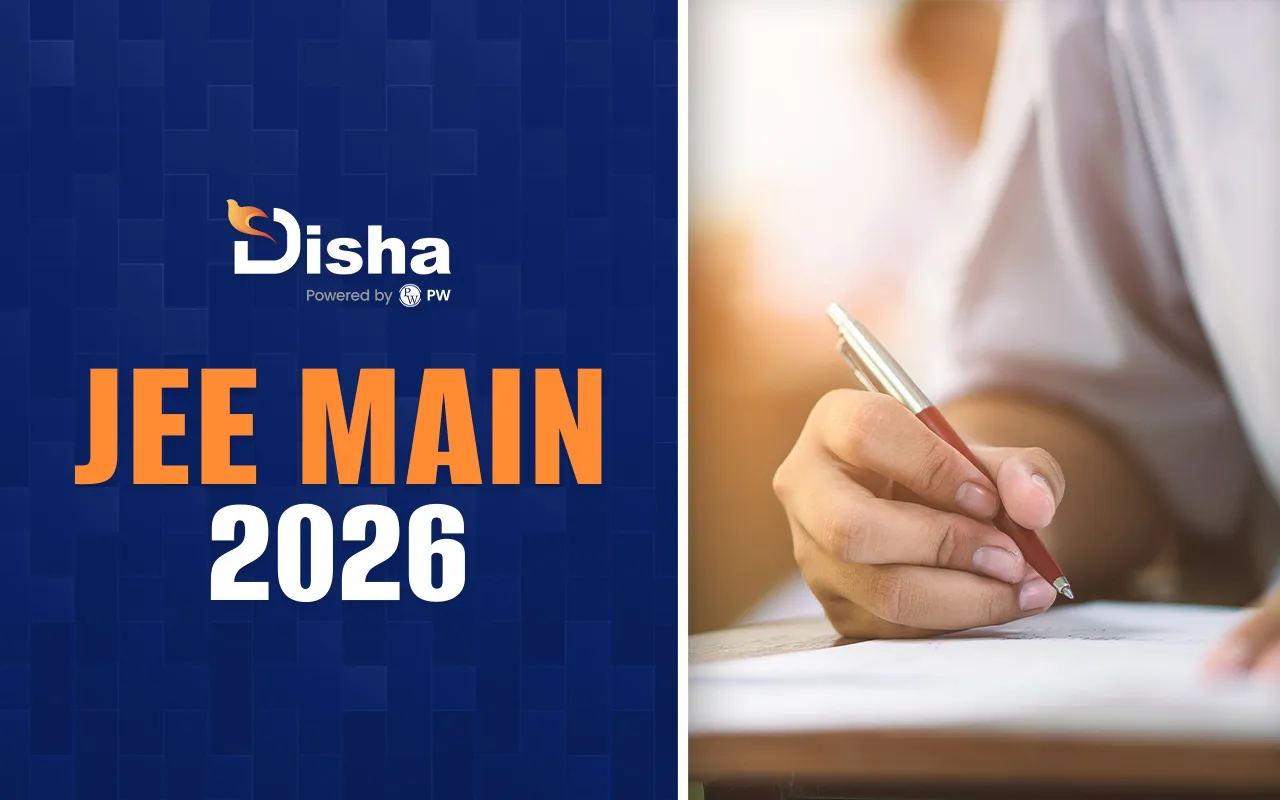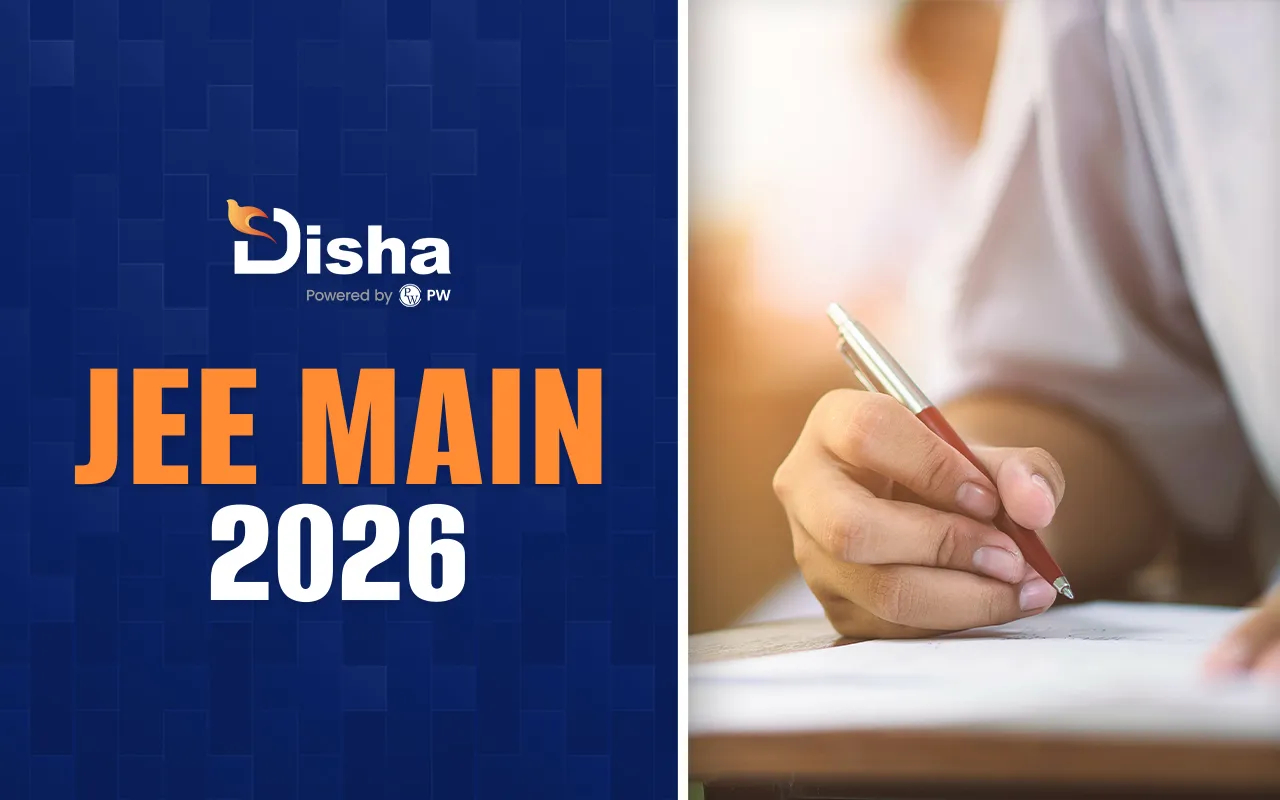

JEE Main 2026 Exam Pattern: JEE Main 2026 is a major entrance exam for students seeking to pursue engineering and architecture courses in India. Familiarity with the pattern of the exam enables candidates to schedule their preparation systematically. The exam comprises three papers: Paper 1 for B.Tech/B.E., Paper 2A for B.Arch, and Paper 2B for B.Plan, with different sections, subjects, and question types for each.
Paper 1 consists of Physics, Chemistry, and Mathematics with both numerical value questions and MCQs, whereas Paper 2A and 2B consist of Mathematics, Aptitude, Drawing (B.Arch.), and Planning (B.Plan.). JEE Main 2026 exam pattern, Marking scheme, language choices, and syllabus based on NCERT Class 11 and 12 are important for strategic preparation and good scoring.
JEE Main 2026 Exam Pattern Overview
JEE Main 2026 Exam Pattern is important for students to know so that they can prepare well. Here we have the major details of the exam pattern, such as the total number of sections, question types, duration, and marks distribution for each paper:
|
JEE Main 2026 Exam Pattern Overview |
|
|
Particulars |
Details |
|
Exam Mode |
Online (Computer-based for B.Tech, B.Arch, and B.Plan) and Offline (Drawing Test for B.Arch) |
|
Number of Papers |
3 Papers: Paper 1 (B.Tech/B.E.), Paper 2A (B.Arch), Paper 2B (B.Plan) |
|
Duration of Exam |
3 hours (180 minutes) for each paper; 4 hours for PwD candidates |
|
Sections in Exam |
Paper 1: Physics, Chemistry, Mathematics Paper 2A: Drawing, Mathematics, Aptitude Paper 2B: Mathematics, Aptitude, Planning |
|
Total Number of Questions |
Paper 1: 75 Paper 2A: 77 Paper 2B: 100 |
|
Total Marks |
Paper 1: 300 marks Paper 2A: 400 marks Paper 2B: 400 marks |
|
Language Options |
Assamese, Bengali, Kannada, Malayalam, Marathi, Odia, Punjabi, Tamil, Telugu, Urdu, Hindi, English, Gujarati |
JEE Main 2026 Exam Pattern for Paper 1 B.Tech/B.E.
The Exam Pattern of JEE Main BTech (Paper 1) has been revised for 2025. Candidates can go through the updated exam pattern designed by the National Testing Agency (NTA) below. The pattern gives complete details regarding the number of sections, the question types, the exam duration, and the marking scheme:
|
JEE Main 2026 Exam Pattern for Paper 1 B.Tech/B.E. |
|
|
Particulars |
Details |
|
Exam Mode |
Online (Computer-based Test) |
|
Number of Sections and Subjects |
3 Sections: Physics, Chemistry, Mathematics |
|
Duration of Exam |
3 hours (180 minutes), 4 hours for PwD candidates |
|
Type of Questions |
MCQs (Multiple Choice Questions) with 4 options, 1 correct answer |
|
Numerical Value Questions (Answer in numerical value) |
|
|
Section A (MCQs) |
Mathematics: 20 questions Physics: 20 questions Chemistry: 20 questions |
|
Section B (Numerical Value) |
Mathematics: 5 questions Physics: 5 questions Chemistry: 5 questions |
|
(Candidates must attempt all 5 questions in Section B) |
|
|
Total Number of Questions |
75 questions |
|
Total Marks |
300 marks |
|
Language Options |
Assamese, Bengali, Kannada, Malayalam, Marathi, Odia, Punjabi, Tamil, Telugu, Urdu, Hindi, English, Gujarati |
JEE Main 2026 Exam Pattern for Paper 2 B.Arch & B.Plan
The JEE Main Exam Pattern for Paper 2 (B.Arch & B.Plan) has been depicted for 2026. This pattern will make it easier for candidates to know the format of the exam and its sections, whether they are taking Paper 2A (B.Arch) or Paper 2B (B.Plan). The exam pattern for both Paper 2A and Paper 2B is given below:
|
JEE Main 2026 Exam Pattern for Paper 2 B.Arch & B.Plan |
||
|
Particulars |
JEE Main Paper 2A (B.Arch) |
JEE Main Paper 2B (B.Plan) |
|
Exam Mode |
Online (Mathematics and Aptitude) and Offline (Drawing Test) |
Online |
|
Number of Sections and Subjects |
3 Sections: Drawing, Mathematics, and Aptitude |
3 Sections: Mathematics, Aptitude, and Planning-Based Questions |
|
Duration of Exam |
3 hours (180 minutes) |
3 hours (180 minutes) |
|
Sections |
Mathematics (Part I): 20 MCQs and 5 Numerical Value Questions |
Mathematics: 20 MCQs and 5 Numerical Value Questions |
|
Aptitude Test (Part II): 50 MCQs |
Aptitude: 50 MCQs |
|
|
Drawing Test (Part III): 2 Questions |
Planning-Based Questions: 25 MCQs |
|
|
Total Number of Questions |
77 Questions |
100 Questions |
|
Type of Questions |
Mathematics and Aptitude: Objective-type questions |
Mathematics and Aptitude: Objective-type questions |
|
Drawing: Questions to test the candidate’s drawing and sketching skills |
Planning-Based Questions: Multiple-Choice Questions |
|
|
Total Marks |
400 marks (Drawing section: 100 marks, with individual marks per question) |
400 marks |
|
Language Options |
Assamese, Bengali, Kannada, Malayalam, Marathi, Odia, Punjabi, Tamil, Telugu, Urdu, Hindi, English, Gujarati |
Assamese, Bengali, Kannada, Malayalam, Marathi, Odia, Punjabi, Tamil, Telugu, Urdu, Hindi, English, Gujarati |
JEE Main 2026 Subject wise Question Distribution
JEE Main 2026 will be conducted through three separate papers for admission to B.Tech, B.Arch, and B.Plan courses. Each paper consists of a subject-wise quota of questions, which is important for the candidates to understand in order to strategize their preparation effectively. The following is a division of the number of questions expected in each paper:
|
JEE Main 2026 Subject wise Question Distribution |
|||||
|
Paper |
Subject |
Section A (MCQ) |
Section B (Numerical Value) |
Total Questions |
Marks |
|
Paper-1 (B.Tech) |
Mathematics |
20 |
5 |
25 |
100 |
|
Physics |
20 |
5 |
25 |
100 |
|
|
Chemistry |
20 |
5 |
25 |
100 |
|
|
Total |
60 |
15 |
75 |
300 |
|
|
Paper-2A (B.Arch) |
Mathematics |
20 |
5 |
25 |
100 |
|
Aptitude Test |
- |
- |
50 |
200 |
|
|
Drawing Test |
- |
- |
2 |
100 |
|
|
Total |
20 |
5 |
77 |
400 |
|
|
Paper-2B (B.Plan) |
Mathematics |
20 |
5 |
25 |
100 |
|
Aptitude Test |
- |
- |
50 |
200 |
|
|
Planning Test |
- |
- |
25 |
100 |
|
|
Total |
20 |
5 |
100 |
400 |
|
Section A: Multiple choice questions
Section B: Numerical value questions (attempt any 5 out of 10, no negative marks here)
JEE Main 2026 Exam Pattern: Marking Scheme
The JEE Main 2026 marking scheme defines how marks are given or lost for various types of questions in Paper 1 (BE/BTech) and Paper 2 (BArch/BPlan). Familiarity with this scheme is necessary for candidates to plan their attempts and score the best.
|
JEE Main 2026 Exam Pattern: Marking Scheme |
|||
|
Particulars |
BE/BTech Marking Scheme |
BArch Marking Scheme |
BPlan Marking Scheme |
|
Correct Answer |
+4 marks (Four marks awarded) |
+4 marks (Four marks awarded) |
+4 marks (Four marks awarded) |
|
Incorrect Answer |
-1 mark (One mark deducted) |
-1 mark (One mark deducted) |
-1 mark (One mark deducted) |
|
Un-attempted Question |
0 marks (No deduction) |
0 marks (No deduction) |
0 marks (No deduction) |
|
Marks per Section |
Mathematics: 25 questions X 4 marks = 100 marks |
Mathematics: 25 questions X 4 marks = 100 marks |
Mathematics: 25 questions X 4 marks = 100 marks |
|
Physics: 25 questions X 4 marks = 100 marks |
Aptitude Test: 50 questions X 4 marks = 200 marks |
Aptitude Test: 50 questions X 4 marks = 200 marks |
|
|
Chemistry: 25 questions X 4 marks = 100 marks |
Drawing Test: 2 questions X 50 marks = 100 marks |
Planning Based Questions: 25 X 4 marks = 100 marks |
|
JEE Main Exam Language Options
JEE Main 2026 will be held in 13 languages to assist students from various regions. These are:
- Hindi
- English
- Gujarati
- Marathi
- Tamil
- Telugu
- Kannada
- Bengali
- Odia
- Assamese
- Punjabi
- Urdu
- Malayalam
Select the most comfortable language for you while completing the application form.
Important Topics in JEE Main 2026 Syllabus
The syllabus of JEE Main 2026 is derived from Class 11 and 12 NCERT topics. It mainly includes Physics, Chemistry, and Mathematics for Paper 1. Understanding and practicing the Important Topics in JEE Main 2026 can help students attempt most of the questions in the exam confidently. These topics form the base of preparation and boost accuracy in problem-solving:
|
JEE Main Syllabus 2026 |
|
|
Subject |
Topics |
|
Mathematics |
3D Geometry, Vectors, Matrices, Sequence and Series, Straight Lines and Circles, Probability, Calculus (including limits, derivatives, and integrals) |
|
Physics |
Mechanics (Laws of Motion, Work, Energy), Thermodynamics, Electrostatics and Current Electricity, Magnetism, Optics, Modern Physics (Atoms, Nuclei) |
|
Chemistry |
Physical Chemistry (Thermodynamics, Chemical Kinetics), Organic Chemistry (Hydrocarbons, Biomolecules), Inorganic Chemistry (Periodic Table, Chemical Bonding) |
FAQs
How many questions are there in JEE Main 2026 Paper 1 in total?
There are 75 questions distributed equally in Physics, Chemistry, and Mathematics.
How is negative marking done in JEE Main 2026?
For every incorrect MCQ, 1 mark is penalized. No negative marking for numerical questions.
Are JEE Main 2026 examinations in regional languages available?
Yes, the examination is available in 13 languages, such as Hindi, English, and others.
What are key topics for JEE Main 2026 preparation?
Key topics are 3D Geometry, Laws of Motion, and Physical Chemistry, among others.
